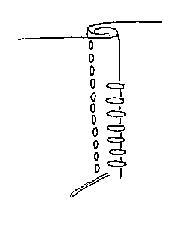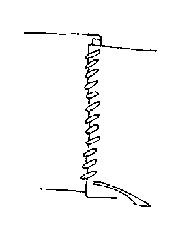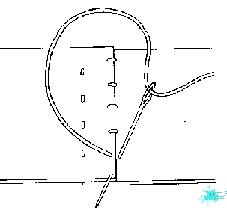
|

|
| Herjolfsnes | Herjolfsnes |
|
|
|
| Herjolfsnes | Herjolfsnes |
|
|
|
| Margrethe - standard | Margrethe - reinforced seams |
Seams
The Herjolfsnes garments were sewn with two-ply, z-spun, s-plied wool of differing thicknesses, but averaging 1mm (2-ply!). There is a definite shift in the colours on the visible seams, which seems no coincidence. Seams are done in a very fine running stitch, with small, tight stitches. The seam allowances are very narrow, usually around 6-7 mm, and treated in different ways. On garment 45, there is a decorative stitch on the seams done in 'prick stitch', with a stitch length of about 1.2 - 1.5 mm. The thread is z/s spun, and less than a mm thick. The seam allowances are very narrow, 6-7 mm wide. They were separated and flattened on the shoulder and side seams, the others were folded over and sewn to the side with an overcast stitch. The gusset seams were folded into the gusset, the front-to-side-gusset seam outwards toward the gusset (i.e. into the bias in both instances).

|

|
| Herjolfsnes | Herjolfsnes |
|
|
|
| Herjolfsnes | Herjolfsnes |
|
|
|
| Margrethe - standard | Margrethe - reinforced seams |
Stitches used at Herjolfsnes according to Norlund: Backstitch, blanket stitch, overcast stitch, darning stitch.
|
|

|
|
Overstitching of two edges, late 14th C |
Overlapping seam |
|
|
|
|
Running stitch |
Back stitch |
|
|
|
|
Seam reinforced with running stitch |